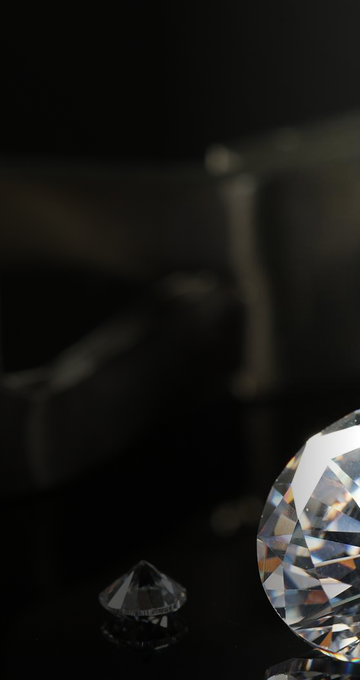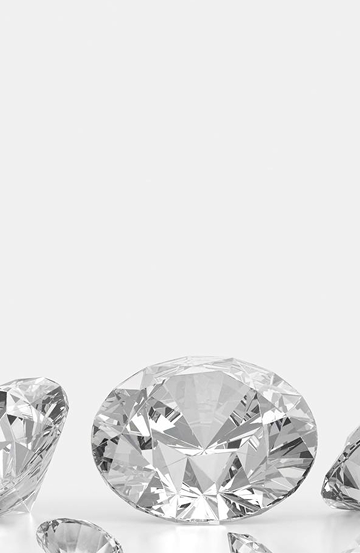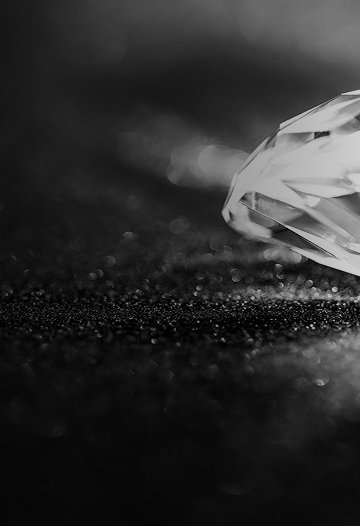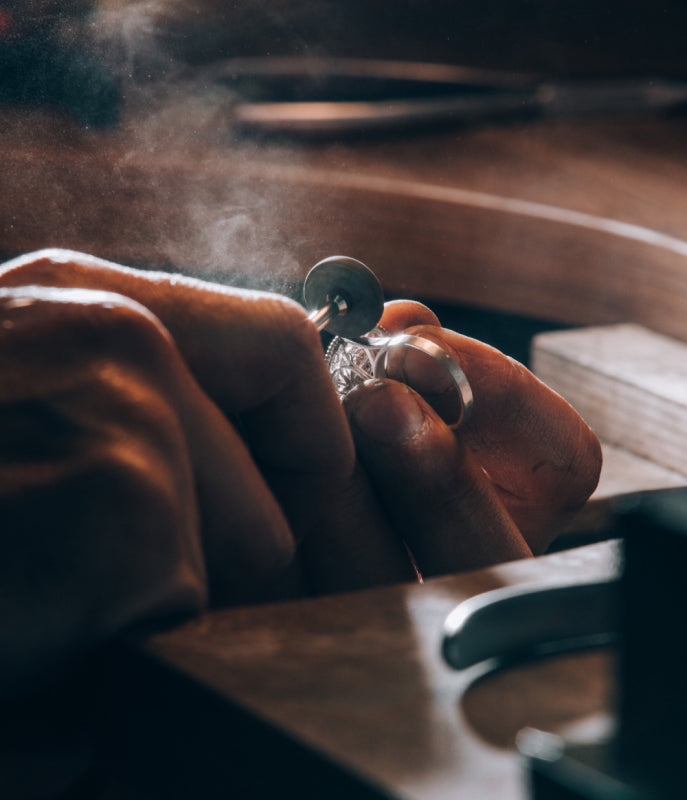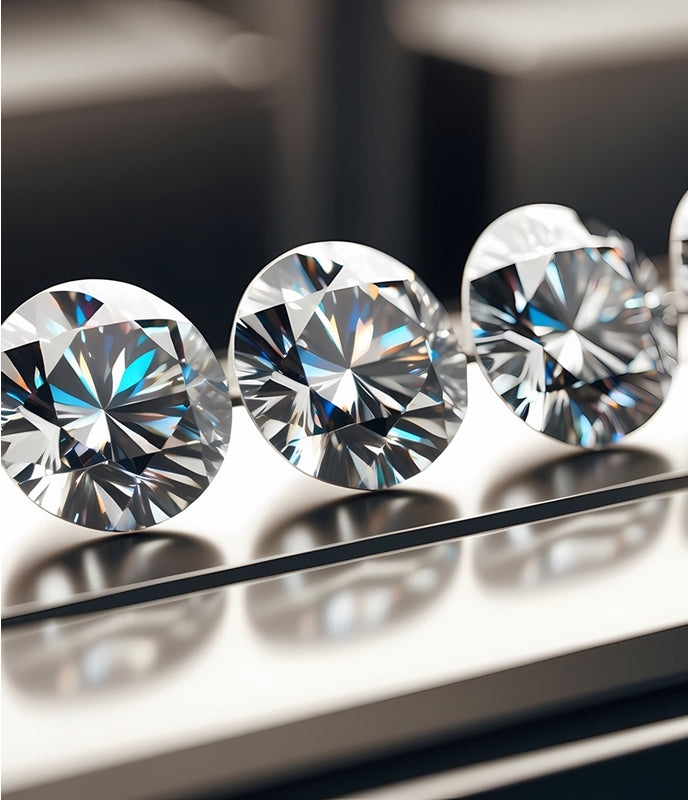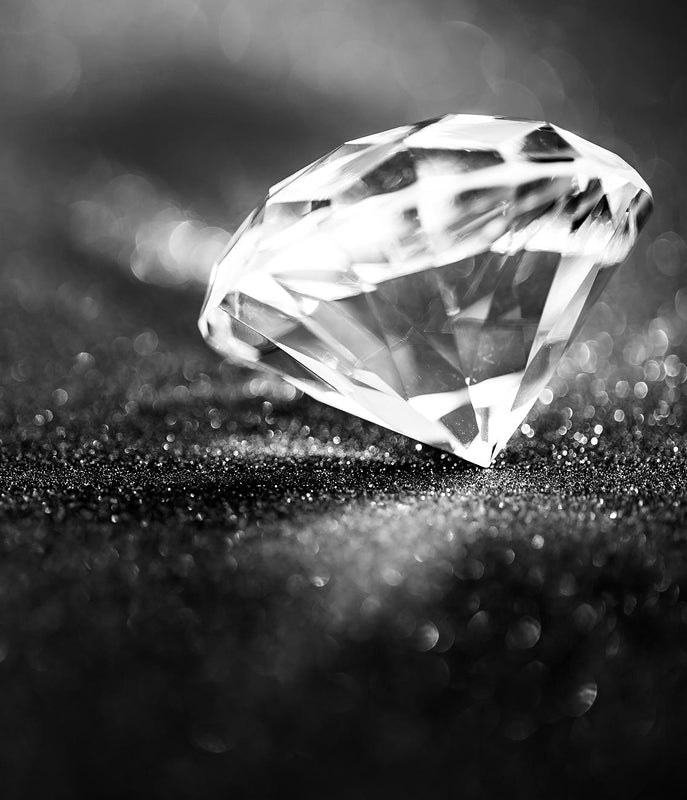DIAMOND CLARITY: SEEING CLEARLY
At Lindsey Scoggins Studio, we offer diamonds graded from FL, flawless, to VS2, very slightly included. And occasionally we will offer an SI1, slightly included, if we feel the diamond is a great value. If you see an SI1, it will likely not be around for long.

Understanding Diamond Clarity
The GIA Diamond Clarity Scale grades diamonds under 10x magnification, from Flawless (FL) to Included (I1–I3):
- Flawless (FL) - No inclusions or blemishes visible under 10x magnification. Extremely rare. This is the best diamond clarity.
- Internally Flawless (IF) – No internal inclusions; only very minor surface marks.
- Very Very Slightly Included (VVS1 / VVS2) – Inclusions are minute and extremely difficult to detect.
- Very Slightly Included (VS1 / VS2) – Inclusions are minor and difficult to see without magnification.
- Slightly Included (SI1 / SI2) – Inclusions may be visible under magnification but often not to the naked eye.
- Included (I1 - I3) – Inclusions are visible to the eye and may impact brilliance or durability.
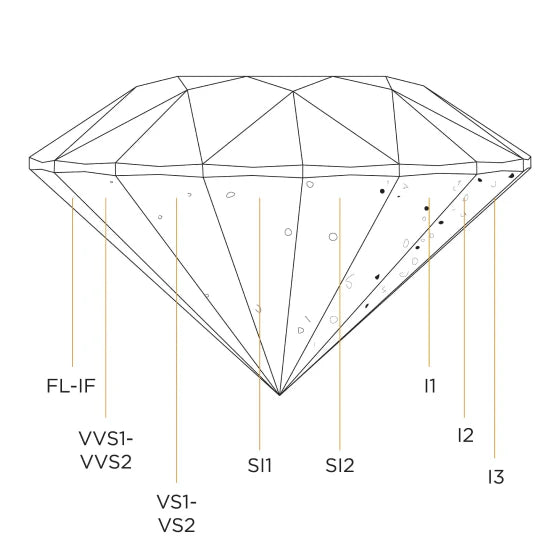
What are Inclusions?
Inclusions are natural internal characteristics formed as a diamond crystallizes deep beneath the earth’s surface. They’re essentially nature’s fingerprints—unique to each stone—and tell part of the story of how that diamond came to be. These internal features can take many forms, from tiny crystals trapped inside the stone to feather-like patterns or minute clouds. While inclusions are a factor in the diamond clarity scale, not all inclusions are created equal—and not all affect a diamond’s beauty. At Lindsey Scoggins Studio, we see inclusions not just as technicalities on a grading report, but as elements to be thoughtfully considered based on their visibility, placement, size, and impact on light performance.
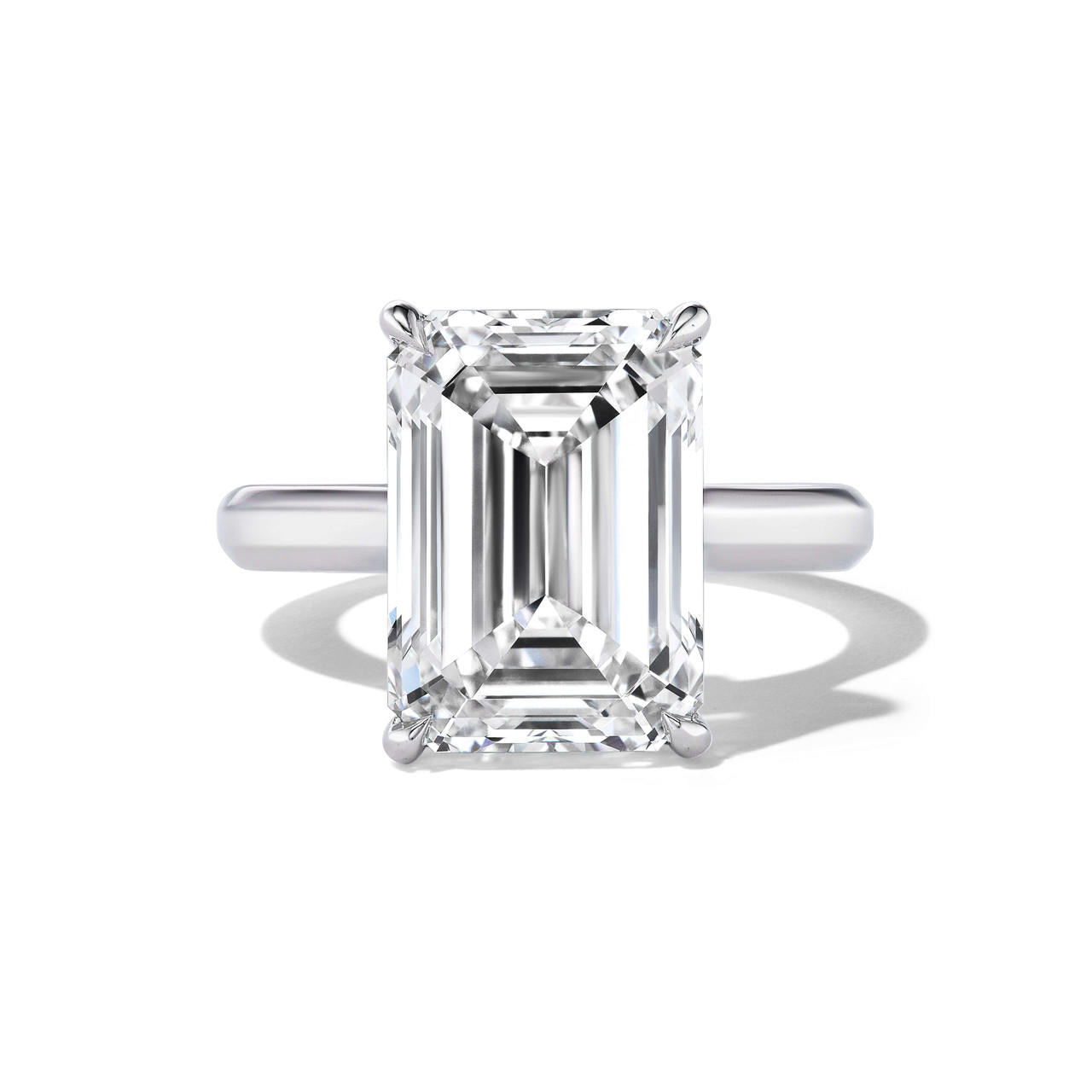
Types of Inclusions
Some common inclusion types include:
- Pinpoints: Tiny white or black dots, often invisible without magnification.
- Feathers: Small internal fractures that may look wispy or feather-like; generally safe unless they reach the surface.
- Crystals or Mineral Inclusions : Tiny crystals of other minerals that formed inside the diamond.
- Needles: Long, thin inclusions that resemble—appropriately—needles.
- Clouds: Groups of pinpoints that can appear hazy if densely clustered.
- Knots: Inclusions that reach the surface of the diamond; often avoided in high-quality stones.

Impact of Inclusions
Many inclusions are microscopic and have no impact on a diamond’s appearance or durability. In fact, some can be skillfully hidden beneath prongs or along edges where they’re completely undetectable once set. Inclusions become more visible as they grow in size, number, or contrast with the diamond. But it’s not just about the diamond clarity scale grade—it’s about the overall appearance. Two diamonds with the same clarity grade can look dramatically different based on the location and type of inclusion. A well-cut diamond with a small, tucked-away inclusion can still be brilliant, clean, and luminous—while one with a centrally located cloud or crystal might appear dull or hazy, even if it’s technically the same grade. We always guide our clients toward eye-clean diamonds—stones where inclusions are not visible without magnification—because what matters most is how your diamond looks to the eye and sparkles in everyday light.
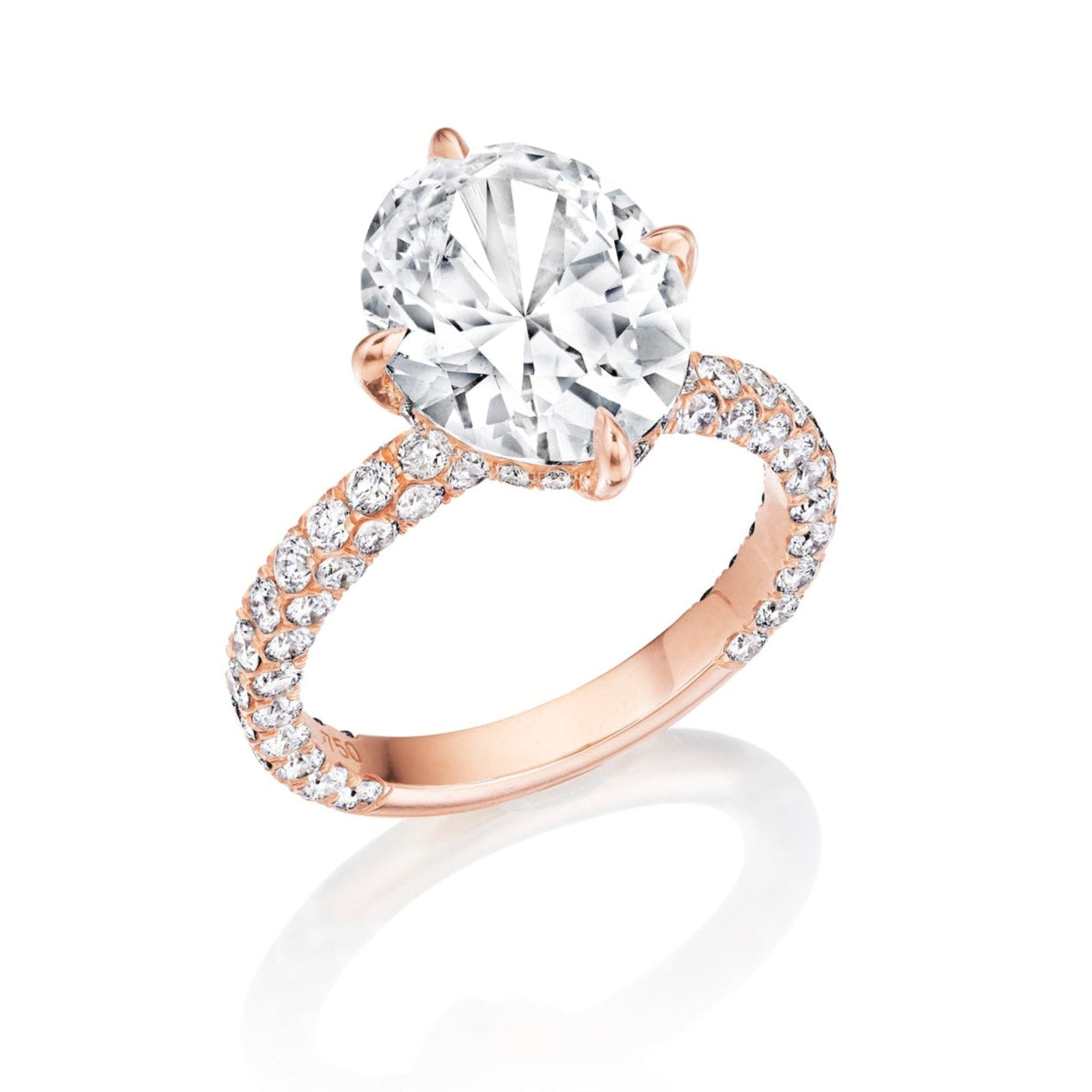
Do you have questions?
Is clarity or color more important when choosing a diamond?
Is clarity or color more important when choosing a diamond?
Both are important, but most people notice color before clarity. You can often choose a slightly lower clarity grade if the diamond is eye-clean.
Should I choose a flawless diamond?
Should I choose a flawless diamond?
A flawless diamond is incredibly rare and is the best diamond clarity, but it is not necessary for beauty. Most people can’t see the difference between Flawless and VS1, making the latter a more practical choice for many.
Do certain diamond shapes show inclusions more?
Do certain diamond shapes show inclusions more?
Yes. Step-cut shapes like emerald and Asscher have open facets that reveal clarity more easily, while brilliant cuts like round or oval help mask imperfections.
How do I contact your team with additional questions?
How do I contact your team with additional questions?
We’re here to help. You can contact our team directly by email at inquiry@lindseyscoggins.com or call or text us at 917-409-7123. You can also schedule a consultation through our website to discuss a custom design, diamond selection, or any questions about the process.
The 4Cs
Curation
Learn more about our diamond curation process and additional factors that we consider when selecting a diamond.
Color
A diamond’s color grade measures how white or colorless it is. Less color means higher quality. D means that a diamond is colorless.
carat
Carat is a diamond’s weight and the system used to measure diamonds. Bigger isn’t always better, cut and setting also affect how large it looks.
Cut
Diamond cut refers to how well a diamond has been shaped and faceted from its rough form. The only specification made by human hands.


